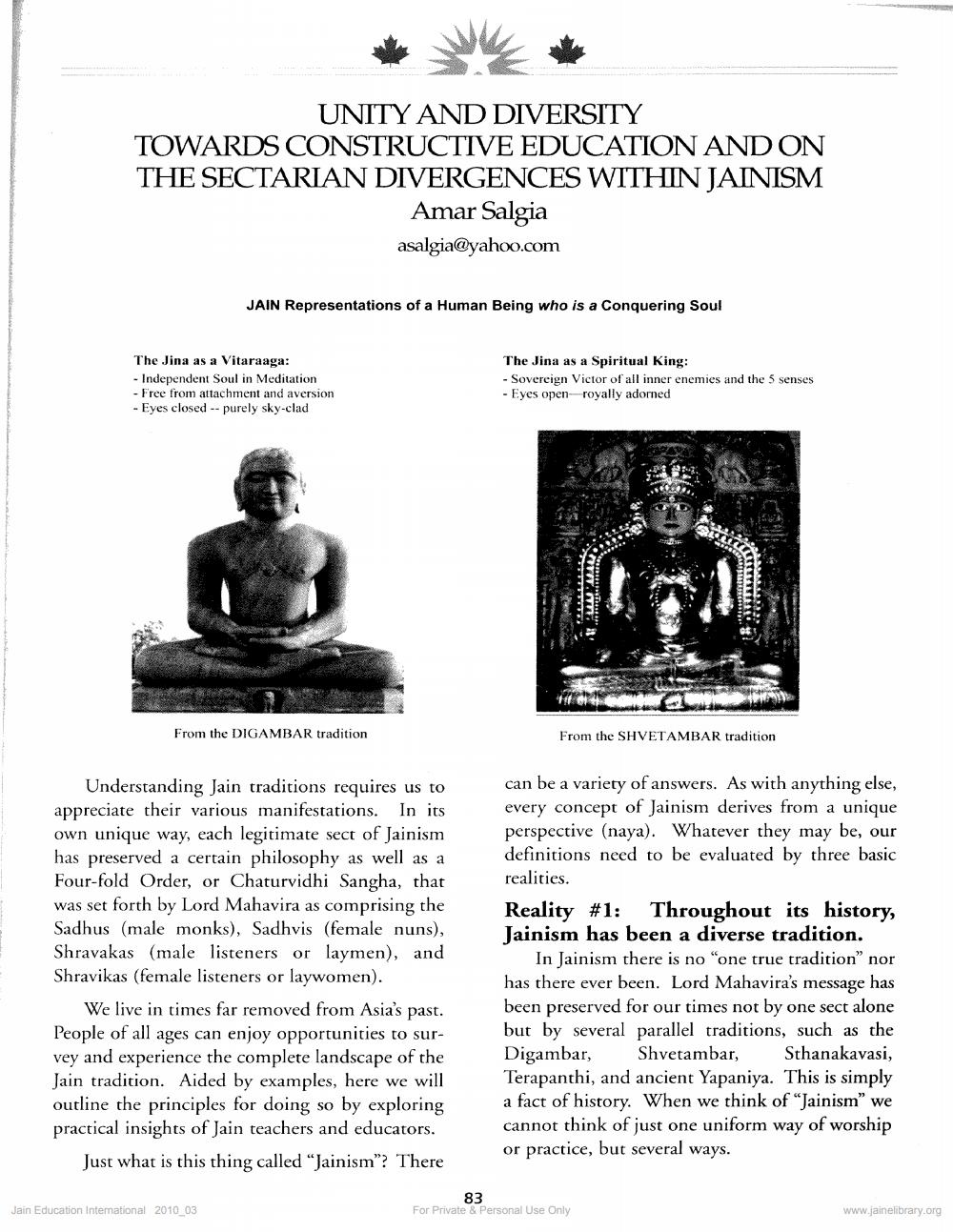________________
UNITY AND DIVERSITY TOWARDS CONSTRUCTIVE EDUCATION AND ON THE SECTARIAN DIVERGENCES WITHIN JAINISM Amar Salgia
[email protected]
JAIN Representations of a Human Being who is a Conquering Soul
The Jina as a Vitaraaga:
- Independent Soul in Meditation
- Free from attachment and aversion
- Eyes closed -- purely sky-clad
From the DIGAMBAR tradition
Understanding Jain traditions requires us to appreciate their various manifestations. In its own unique way, each legitimate sect of Jainism has preserved a certain philosophy as well as a Four-fold Order, or Chaturvidhi Sangha, that was set forth by Lord Mahavira as comprising the Sadhus (male monks), Sadhvis (female nuns), Shravakas (male listeners or laymen), and Shravikas (female listeners or laywomen).
We live in times far removed from Asia's past. People of all ages can enjoy opportunities to survey and experience the complete landscape of the Jain tradition. Aided by examples, here we will outline the principles for doing so by exploring practical insights of Jain teachers and educators.
Just what is this thing called "Jainism"? There
Jain Education International 2010_03
The Jina as a Spiritual King:
- Sovereign Victor of all inner enemies and the 5 senses
- Eyes open royally adorned
From the SHVETAMBAR tradition
can be a variety of answers. As with anything else, every concept of Jainism derives from a unique perspective (naya). Whatever they may be, our definitions need to be evaluated by three basic realities.
Reality #1: Throughout its history, Jainism has been a diverse tradition.
In Jainism there is no "one true tradition" nor has there ever been. Lord Mahavira's message has been preserved for our times not by one sect alone but by several parallel traditions, such as the Digambar, Shvetambar, Sthanakavasi, Terapanthi, and ancient Yapaniya. This is simply a fact of history. When we think of "Jainism" we cannot think of just one uniform way of worship or practice, but several ways.
83
For Private & Personal Use Only
www.jainelibrary.org




